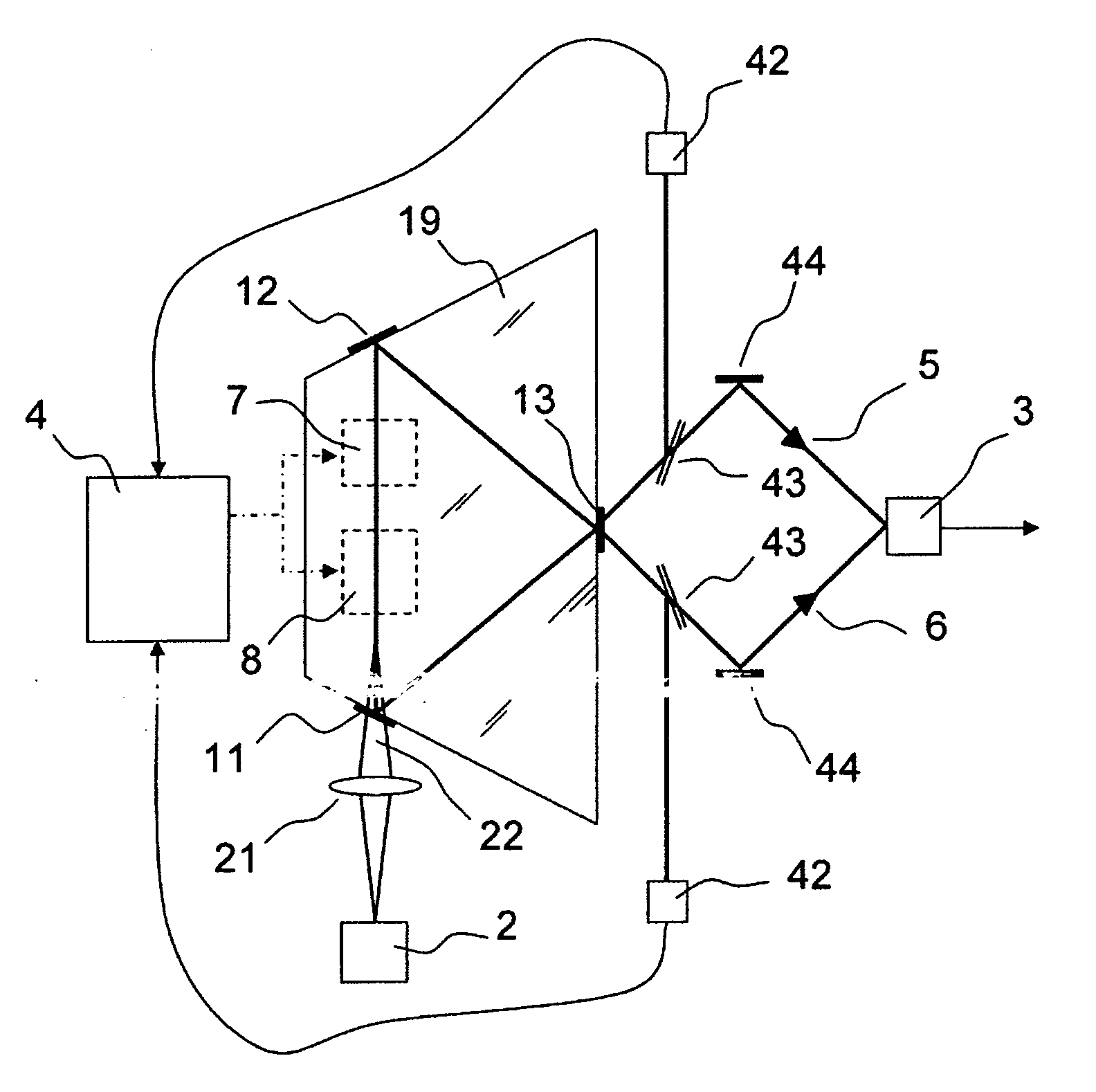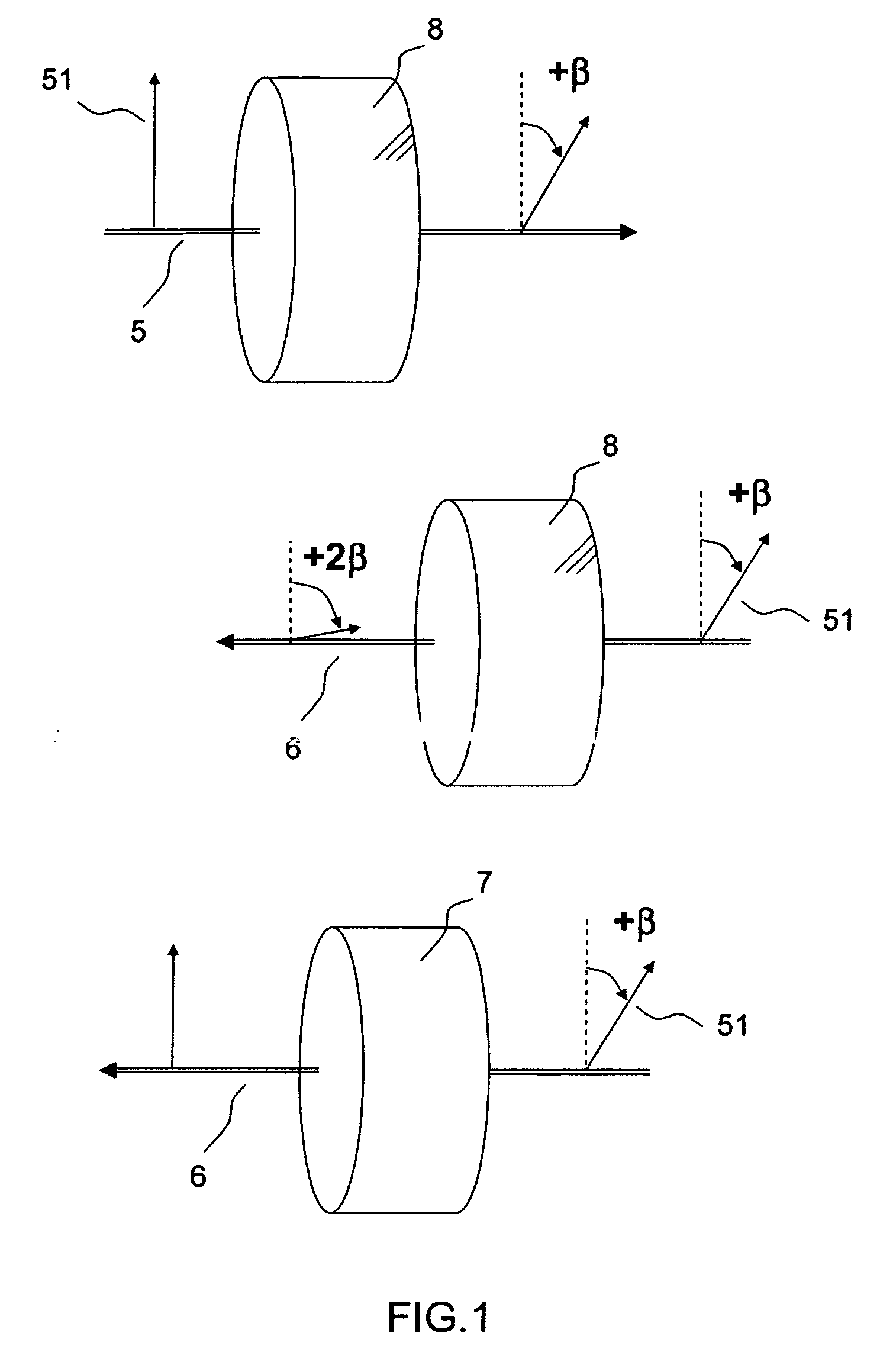Stabilized Solid-State Laser Gyro and Anisotropic Lasing Medium
- Summary
- Abstract
- Description
- Claims
- Application Information
AI Technical Summary
Benefits of technology
Problems solved by technology
Method used
Image
Examples
first embodiment
[0031]FIG. 3 describes the general principle of the laser gyro in the first embodiment according to the invention. It includes a laser cavity having 3 mirrors 11, 12 and 13, said cavity comprising a reciprocal rotator or a waveplate 7, a nonreciprocal rotor 8, these elements being similar to those of FIGS. 2a and 2b, and an anisotropic lasing medium 19. For example, the first element 7 exhibiting a reciprocal effect-rotates the polarization of the light through an angle α in the forward direction and the second element 8 rotates the polarization through an angle β, again in the forward direction. An optical mode linearly polarized in the same polarization direction as that of the stimulated emission in the lasing medium is amplified with a maximum gain and can thus oscillate efficiently. When such an intra-cavity mode makes a complete revolution of the cavity, undergoing firstly the reciprocal effect and then the nonreciprocal effect, its plane of polarization rotates through an ang...
second embodiment
[0038] In the invention, in particular, it is possible to use a nonplanar cavity as described in FIGS. 4a and 4b instead of an optical element acting on the polarization state of the counterpropagating modes. Consider a cavity 1 having at least four mirrors 11, 12, 13 and 14. It is possible to place them, as indicated in FIG. 4a, in such a way that the counterpropagating beams propagate in one plane (the (X, Y) plane in FIG. 4a). In this case, if these beams are linearly polarized, the polarization direction is maintained. It is also possible to place them in such a way that the counterpropagating beams no longer propagate in one plane, as indicated for example in FIG. 4b, in which the mirror 12 has been displaced along the Z axis. In this case, it has been demonstrated that the polarization direction of the counterpropagating beams has rotated through an angle that depends on the geometry of the cavity when the beam has made one complete revolution in the cavity (A. C. Nilsson, E. ...
PUM
 Login to view more
Login to view more Abstract
Description
Claims
Application Information
 Login to view more
Login to view more - R&D Engineer
- R&D Manager
- IP Professional
- Industry Leading Data Capabilities
- Powerful AI technology
- Patent DNA Extraction
Browse by: Latest US Patents, China's latest patents, Technical Efficacy Thesaurus, Application Domain, Technology Topic.
© 2024 PatSnap. All rights reserved.Legal|Privacy policy|Modern Slavery Act Transparency Statement|Sitemap



